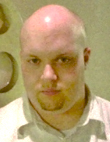|
|
This topic comprises 3 pages: 1 2 3
|
|
Author
|
Topic: Strong Millenium heat shield/shutter contact
|
|
|
|
|
|
|
|
|
|
|
|
|
|
|
|
|
|
|
|
|
|
|
|
|
Steve Guttag
We forgot the crackers Gromit!!!

Posts: 12814
From: Annapolis, MD
Registered: Dec 1999
|
 posted 10-24-2007 05:23 PM
posted 10-24-2007 05:23 PM




The shutter distance to the aperture has its ups and downs...while it is cutting a smaller cone of light, it is closer to the focal plane which makes the transition more visble...it make the Christie bow tie shutter all that much more annoying (it really is a horrible thing to sit through, in my opinion).
Mark not agreeing with the method of cutting the aperature aside...it is a fact none the less. The Simplex (conical) shutter will cut the aperture square, or more square, than either Century or Christie's bow-tie. Turn the machines over by hand and look right down the lens receiver at the aperture and see how the various shutters block and unblock the aperture...some do it better than others.
As to Kinoton...their mechanical machines have long since used a single wing largish conicalish shutter (we not so conical but angled...the AA2 shutter has a slight conicalness to it). As such, it is spinning at twice the angular velocity of a standard shutter but due to its larger radius, its linear velocity is also great there. This velocity means for a faster opening/closing off of the light as well as their ability to use a greater than 50% shutter without ghosting.
Their "E" projectors use a bow-tie shutter, angled (except for the FP75) and its velocity varies based on film speed. As such, they don't tend to look identical between a mechanical and a "E" projector. But then again, the "E" projector is notably steadier too so you are going to get a different look there.
Note, the steadiness of the projector does not affect the flicker or brightness, but it does improve image resolution as you eye will see more detail rather than using persistance of vision to morph an unsteady image into a soft appearing one.
Double shutters are another means to increase blade velocity. By adding the second shutter (counter-rotating) you double the linear velocity of the blade. This is most often used to increase light output. By making each blade smaller (less blade, but same radius), you effectively increase the "open" time so that the average light level is increased. The disadvantage to this method is that the center of the image is the last to close and first to open...as such, it will induce a hot-spot. I find they also tend to have a bit of a pulsating light to them as well.
Steve
| IP: Logged
|
|
|
|
|
|
|
|
All times are Central (GMT -6:00)
|
This topic comprises 3 pages: 1 2 3
|
Powered by Infopop Corporation
UBB.classicTM
6.3.1.2
The Film-Tech Forums are designed for various members related to the cinema industry to express their opinions, viewpoints and testimonials on various products, services and events based upon speculation, personal knowledge and factual information through use, therefore all views represented here allow no liability upon the publishers of this web site and the owners of said views assume no liability for any ill will resulting from these postings. The posts made here are for educational as well as entertainment purposes and as such anyone viewing this portion of the website must accept these views as statements of the author of that opinion
and agrees to release the authors from any and all liability.
|

 Home
Home
 Products
Products
 Store
Store
 Forum
Forum
 Warehouse
Warehouse
 Contact Us
Contact Us




 Printer-friendly view of this topic
Printer-friendly view of this topic
















